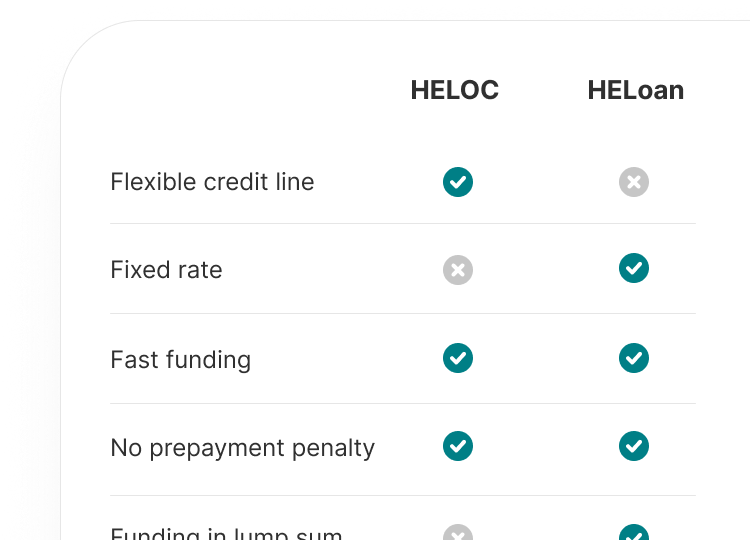HELOC CALCULATOR
Calculate your HELOC rate & payment
Use this calculator to help estimate your personalized interest rate, payment, and line amount with a HELOC through Prosper.
Your info
Est. variable rate1,5
0%
Est. credit line4
$0
Est. monthly payment1,5
$0
Est. fixed rate
0%
Est. loan amount7
$0
Est. monthly payment6
$0
HELOC
Est. variable rate1,5
0%
Est. credit line4
$0
Est. monthly payment1,5
Est. mo. payment1,5
$0
Est. fixed rate
0%
Est. loan amount7
$0
Est. monthly payment6
Est. mo. payment6
$0
Enjoy our no-stress, speedy digital process
Enjoy our no-stress, digital process
This calculator is a self-help tool for your independent use and is intended for illustration purposes only. Results aren’t guaranteed, and may not be relevant to your specific circumstance.

See your home equity options side-by-side
Explore your home equity options
Home equity line of credit (HELOC)
Home equity loan (HELoan)
About our HELOC calculator
Back up to calculatorHow to use this HELOC calculator
- Enter your desired funding amount. This number must be between $17.5k–$500k4 to be eligible for a home equity line of credit (HELOC) through Prosper.
- Enter your property details: state where your property’s located, estimated home value, estimated mortgage balance, and property type.
- Select your credit score range.
- Click or tap “Calculate”.
- The calculator will estimate the credit line you may be able to borrow with a home equity line of credit through Prosper.
How these results are calculated
- Rate: This variable percentage for a HELOC is based on several factors, including your credit score, property characteristics, and the amount you want to borrow.
- Max. credit line: This value is based on how much equity you have in your home, your credit score range, and your property’s location and primary use.
- Monthly payment1,5: For a HELOC, the estimated interest-only2 regular payment you could make during the draw period is tied to the current Prime rate. (Your regular payment during the repayment period would be your prorated full balance—learn more here.)
Home equity resources
See more home equity content

Pros & cons of home equity lines of credit

How much equity do you need for a HELOC?
How can we help you prosper?
We've got your back, every step of the way.
Chat with a dedicated Prosper team member, not a robot.
Answers to home equity questions, from your application to payments.
Home equity is just the beginning. Prosper has smart, simple tools for borrowing, saving, and earning with products like personal loans, a credit card, and investing.
About Prosper